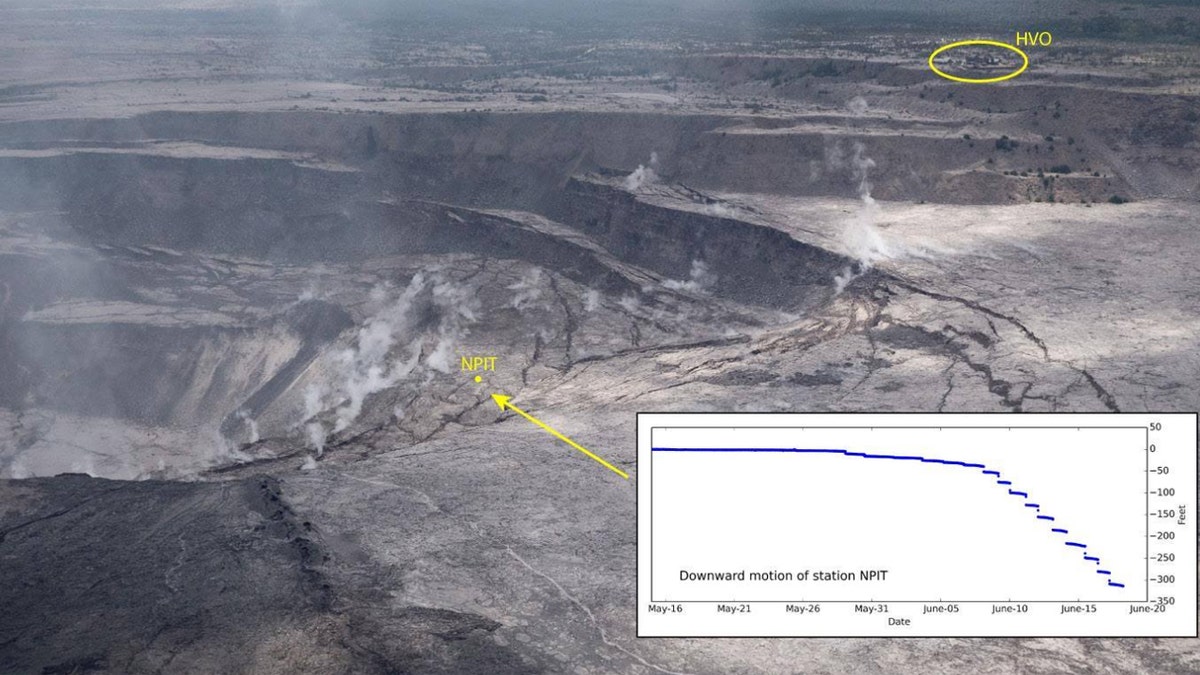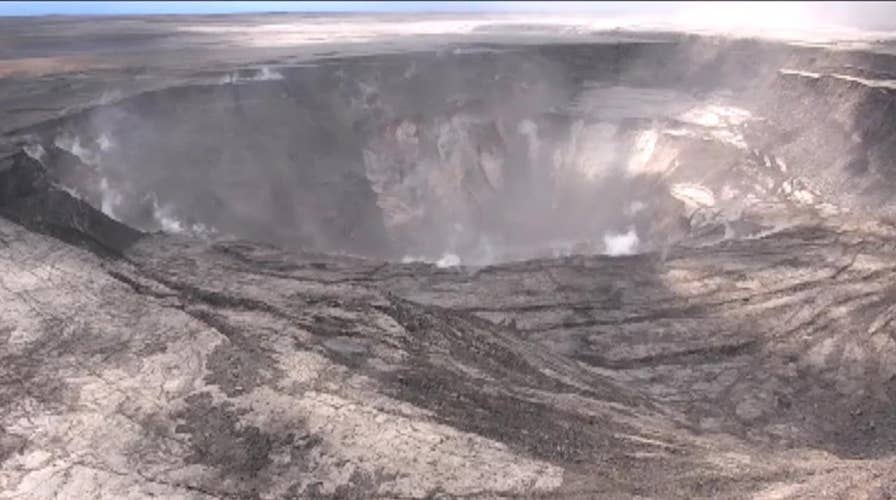Dramatic changes happening inside Halemaumau crater
The volcanic crater usually filled with lava, has been drained.
The summit crater of Hawaii's Kilauea Volcano has grown dramatically large since the latest eruption began in May, so large that it may be threatening a museum at Hawaii Volcanoes National Park.
The U.S. Geological Survey said in a Twitter post on Monday that a GPS station location in the Halemaumau Crater was knocked out of service after subsiding 310 feet as the subsidence continues to grow.
Since the eruption started on May 3, sending magma spewing out along fissures in the eastern Puna region of the island, the volcano's crater has been subsiding. That has caused near-daily earthquakes, rock falls and subsequent explosions at the summit.
"The current slumping and rocksliding is a response to magma draining from the former summit lava lake. However, we don't know if or when the lake might reappear," the agency said on Twitter.

A GPS station at the summit of Kilauea volcano is no longer able to transmit data after subsiding 310 feet, according to the USGS. (USGS)
The USGS said over the weekend that over 350 earthquakes greater than magnitude 2.5 were reported in a 24-hour peroid at the summit.
On Sunday, the USGS conducted a drone flight over the crater area, showing the dramatic changes as the lava has drained out. According to USGS, the deepest part of Halemaumau is now over 1,300 feet below the caldera floor.
HUNDREDS OF KILAUEA SURVIVORS SEEK FEMA HELP AS VOLCANO RAGES ON
"This thing is getting deeper and deeper as these explosions continue to happen," volcanologist and University of Hawaii at Manoa professor Mike Garcia told KHON, adding that he is not entirely sure what it means.
"You would have thought that whatever was going on initially, that magma would have drained out and gone down to east rift zone. That happened in the early days of May. Since that happened the explosions continued. Does that mean a deeper reservoir continues to drain?"
Garcia said it's hard to predict what will happen next because it's too dangerous to observe the volcano directly, but that new cracks are forming outwards from the old crater.
This is affecting nearby buildings, such as the Thomas A. Jaggar Museum at Hawaii Volcanoes National Park. Artifacts were being removed last week because park staff saw building cracks inside the museum, the Hawaii Tribune-Herald reported.
The building, which also houses the USGS Hawaiian Volcano Observatory, hasn't been structurally assessed. But there is concern that it could slide into the volcano's growing summit crater, park spokeswoman Jessica Ferracane told the paper.
HAWAII VOLCANO: KILAUEA LAVA BOILED AWAY BIG ISLAND'S LARGEST FRESHWATER LAKE

Halemaumau Crater continues to grow as new rockfall collapses and hundreds of earthquakes have been reported. (USGS)
"Every single day, we are sustaining damage from these ongoing earthquakes," Ferracane said. "The cracks and the fractures along the overlook of Jaggar go through rock walls down through the ground."
Even if the volcanology museum is spared from destruction, it might not be safe to reuse, Ferracane said.
"It's mildly possible it could be reused," Ferracane said. "I'm not sure if we want to reuse it because of the proximity to a very unstable cliff."
The Associated Press contributed to this report.

